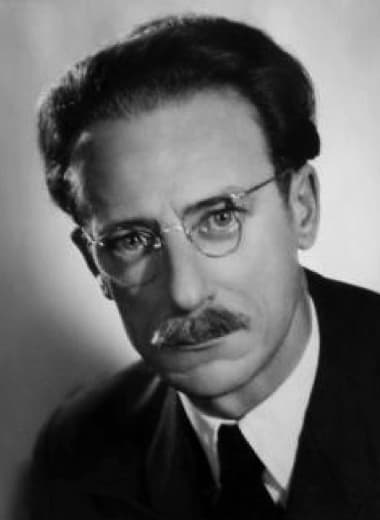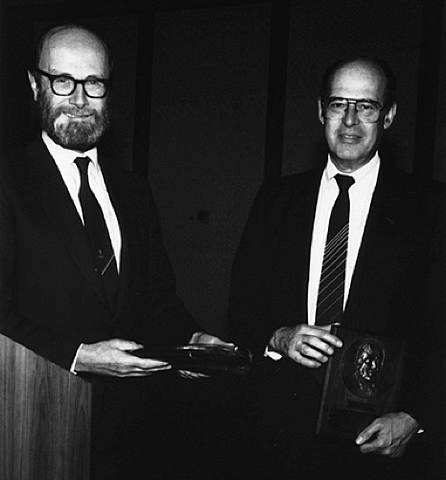Key Milestones in the Development Interferential Current (IFC) Therapy
Interferential Current (IFC) therapy is a non-invasive treatment method widely used in pain management and rehabilitation.
1. Early Development (1950s)
- Conceptualization: Interferential Current (IFC) therapy was pioneered in the mid-20th century by Austrian physicist Dr. Hans Nemec. His groundbreaking work introduced the use of medium-frequency currents to achieve deeper tissue penetration, which became the cornerstone of IFC therapy.
2. Introduction to Clinical Practice (1960s-1970s)
- Adoption in Physiotherapy: During the 1960s and 1970s, IFC therapy gained popularity in clinical settings, especially in Europe. Physiotherapists began using IFC for treating chronic pain, post-operative pain, and various musculoskeletal disorders.
- First Commercial Devices: The introduction of the first commercial IFC devices made the therapy more accessible to healthcare providers, expanding its use in clinical practice.
3. Introduction of the Gate Control Theory of Pain (1965)
- Melzack and Wall's Contribution: In 1965, Ronald Melzack and Patrick Wall introduced the Gate Control Theory of Pain, a significant advancement in pain management. This theory suggested that an IFC frequency of 100 Hz could activate large-diameter, low-threshold nerve fibers, utilizing the "pain-gating" mechanism to achieve analgesia.
4. Advancements in Technology (1980s-1990s)
- Improved Device Precision: The 1980s and 1990s saw technological advancements that led to the development of more sophisticated IFC machines. These devices offered greater control over frequency, intensity, and treatment parameters, enhancing the efficacy and safety of IFC therapy.
- Widespread Use: By the 1980s, IFC therapy had become a standard treatment modality in physiotherapy clinics worldwide.
5. Research and Evidence-Based Practice (1990s-2000s)
- Clinical Studies: The 1990s and 2000s witnessed numerous studies evaluating the effectiveness of IFC in pain management, rehabilitation, and other therapeutic areas. Research confirmed IFC's benefits in reducing pain, improving mobility, and accelerating the healing process.
- Guidelines and Protocols: The growing body of evidence led to the development of standardized treatment protocols, making IFC a more reliable and consistent therapy option.
6. Integration of Interferential Current (IFC) with Other Therapies (2000s-Present)
- Multimodal Treatment Approaches: In recent years, IFC has increasingly been integrated with other therapeutic modalities, such as manual therapy, ultrasound, and exercise programs, to enhance overall treatment outcomes.
- Patient-Centric Care: The focus has shifted toward personalized treatment plans, where IFC therapy is tailored to meet the specific needs of each patient, improving both its effectiveness and patient satisfaction.

Hans Nemec [1907-1981]
1907: Birth and Early Life
- Born on July 6, 1907, in Vienna, Austria.
1925-1932: Education in Technical Physics
- Studied technical physics at the Vienna University of Technology, earning the title of Diplomat Engineer.
1932-1936: Early Career and Research
- Served as a research assistant at the Institute of Electrical Engineering under Prof. Petritsch.
- Completed a dissertation on an electro-acoustic topic.
- 1935: Earned a Doctorate in Technical Sciences (Dr. Technical).
1936: Personal Milestones
- Married Margarete Wawrzik. Together, they had three daughters and two sons.
1936-1947: Professional Development
- Worked as a technical consultant for electro-medical devices at Schulmeister.
- Served as a scientific assistant to Prof. Kowarschik at the Institute of Physiotherapy in Vienna-Lainz.
- Played a key role in establishing a technical physics laboratory in Vienna, later moved to Reith near Kitzbühel, Tyrol.
- Authored and published the monograph Electrogymnastics through Springer-Verlag.
- Developed electro-medical devices used in hospitals during World War II.
1947-1981: Innovation and Influence in Electro-Medicine
- Owned and operated an electro-medical laboratory in Sulz, later relocated to Rankweil, specializing in the production of electro-medical devices.
- Focused particularly on the development of interference therapy.
- Secured numerous patents both domestically and internationally.
- Lectured on physiotherapy at the University of Innsbruck.
- Published various works on current stimulation therapy.
- Conducted electrotherapy courses for doctors and physiotherapists.
- Served as a technical consultant for companies manufacturing electro-medical devices.
- Participated in rehabilitation courses for disabled individuals.
Philosophical and Spiritual Pursuits
- Engaged in deep philosophical and theological studies, exploring the meaning of life through mysticism and Zen meditation.
- Maintained a personal friendship with Karlfried Graf Dürckheim and led meditation classes in Batschuns, St. Gerold, Bad Tainach, and Germany.
Passed away on September 9, 1981, in Rankweil, Vorarlberg.

Patrick Wall [1925-2001] and Ronald Melzack [1929-2019]
Ronald Melzack and Patrick Wall made groundbreaking contributions to the field of pain management, particularly with their development of the Gate Control Theory of Pain. Here are key milestones related to their work:
1. Introduction of the Gate Control Theory of Pain (1965)
- Publication of the Theory: In 1965, Ronald Melzack and Patrick Wall published their seminal paper, "Pain Mechanisms: A New Theory," in the journal Science. This paper introduced the Gate Control Theory of Pain, which revolutionized the understanding of how pain is processed in the nervous system.
- Core Concept: The theory proposed that pain signals are not directly transmitted to the brain but are modulated by a "gate" mechanism in the spinal cord. This gate can either allow or inhibit the transmission of pain signals, depending on factors such as nerve impulses from non-painful stimuli and psychological states. This challenged the previously held notion that pain perception was solely a result of direct nerve damage or stimulation.
2. Impact on Pain Management and Research (1960s-1980s)
- Shift in Focus: The Gate Control Theory shifted the focus of pain research from a purely biomedical model to a more comprehensive biopsychosocial model, which considers psychological and social factors in pain perception and management.
- Development of New Therapies: The theory laid the groundwork for the development of new pain management strategies, including the use of transcutaneous electrical nerve stimulation (TENS), which works by stimulating non-painful nerves to "close the gate" and reduce pain perception.
3. Expansion of Pain Theories (1970s-1990s)
- Neuromatrix Theory of Pain (1990s): In the 1990s, Melzack expanded on the Gate Control Theory with his Neuromatrix Theory of Pain. This theory proposed that pain is generated by a widespread network of neurons in the brain, known as the "neuromatrix," which is influenced by various inputs, including sensory, cognitive, and emotional factors. This model provided a more complex understanding of chronic pain conditions, emphasizing the role of the brain in pain perception.
- Chronic Pain Understanding: The Neuromatrix Theory was particularly influential in explaining chronic pain conditions where no clear physical cause could be identified, highlighting the role of the central nervous system in pain.
4. Influence on Clinical Practice and Pain Medicine (1980s-Present)
- Multidisciplinary Pain Clinics: Inspired by the biopsychosocial approach, pain clinics began adopting multidisciplinary methods, combining physical, psychological, and pharmacological treatments to manage pain more effectively.
- Educational Programs: The work of Melzack and Wall influenced the development of educational programs and protocols for pain management, ensuring that healthcare providers understand the complexities of pain perception and the importance of individualized care.
5. Recognition and Legacy (2000s)
- Awards and Honors: Both Melzack and Wall received numerous awards for their contributions to pain science. For example, Melzack was awarded the Grawemeyer Award in Psychology in 2010 for his Neuromatrix Theory of Pain.
- Ongoing Research and Influence: Their theories continue to influence pain research and clinical practices worldwide, with ongoing studies exploring the mechanisms of pain modulation and the development of new therapies based on their work.
These milestones highlight how Melzack and Wall's theories transformed the understanding of pain, leading to more effective and holistic approaches to pain management.